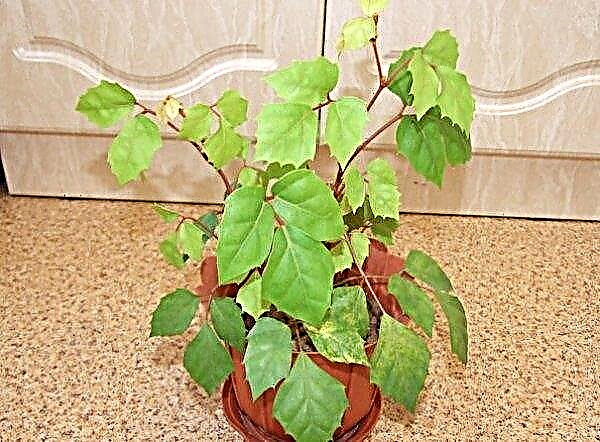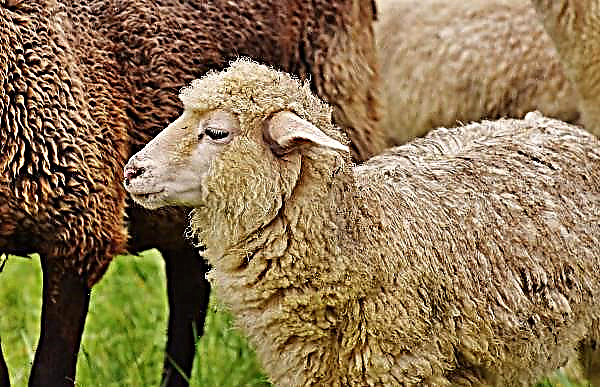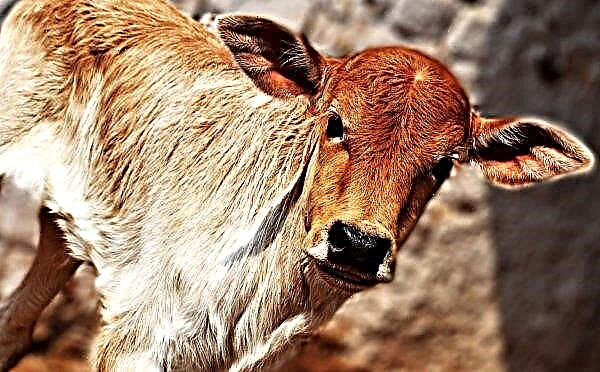Geranium, or, as it is also called, pelargonium is considered one of the most beautiful and useful indoor plants. However, in order for the plant to grow and develop harmoniously, it is necessary to adhere to some rules, one of which is the timely and high-quality planting. Consider the most suitable conditions for planting geraniums, methods for carrying out this procedure, further care for the flower, as well as methods for combating diseases and pests that attack the plant.
Optimal conditions for planting and growing geraniums
In the old days, geranium was considered a flower of aristocrats, and only the richest and most noble people could afford its acquisition and maintenance of the house. Today, due to the availability of a wide variety of exotic plants, pelargonium has lost its former popularity, however, in terms of beauty and duration of flowering, it is not inferior to anything and even surpasses newfangled exotics.
Caring for a flower is not particularly difficult, because geranium is quite unpretentious and perfectly adapts even to the most adverse conditions.
And yet, in order for this bright flower to please its abundant flowering all year round, it is necessary to highlight some key requirements for growing at home and observe them:
- Temperature. Since the plant is intended for growing at home, the most suitable for it is room temperature, that is, not lower than + 15 ° C. A lower indicator will provoke a deterioration in the appearance of the plant - it will look oppressed, the leaves will turn yellow and wilt, and flowering risks either interruption or not begin at all. Pelargonium also feels good during heat, withstanding the highest temperatures. In winter, that is, during the resting period of geraniums, it is recommended to ensure a moderate temperature regime - that is, +9 ... + 11 ° C and protect the flower from drafts.
- Lighting. Pelargonium is a very photophilous plant and tolerates direct sunlight, so the eastern, western and southern sides of the windowsill are ideal for keeping it, however, in order to avoid leaf burns, it is recommended to nevertheless shade the flower on especially hot days. Geranium can also develop in partial shade, but a lack of bright light is fraught with loss of foliage and color of flowers, which subsequently leads to their decline and even death of the plant.

- Humidity of air and soil. The main distinguishing feature of a flower is its drought tolerance, due to the natural habitat of the plant. Arriving to us from Africa itself, pelargonium cannot tolerate excess moisture, preferring rather its lack, and this should be taken into account when keeping the plant at home. Increased air humidity for a flower can be fatal, so you should never spray it, otherwise the water that has fallen on the leaves will worsen their appearance and condition of the geranium. Watering should be provided with a moderate flower - about two times a week, preventing waterlogging of the soil.
Did you know? In Bulgaria, this flower is called «health resort», and justly deserved, because geranium really has numerous healing properties — geranium oil is used to eliminate various skin diseases (psoriasis, dermatitis, inflammation), and even has the most positive effect on the human psyche, increasing mood and self-confidence.
How to plant geraniums
The frequency of geranium transplantation depends on the speed of its growth - in most cases, the flower needs annual renewal of the pot, however, with a slow set of green mass, it is enough to transplant it only once every few years.
With proper care, pelargonium is able to preserve and delight with its decorative effect for more than 10 years, but for this you will have to take into account and take care of some significant factors - planting dates, choice of capacity and soil, prepare the necessary tools and the plant itself for this procedure. We consider each item in more detail.

Landing time
Like all indoor plants, geraniums are quite demanding on the timing of planting. It is best to plant a flower in the spring, namely in March - early April, when it will be much easier for him to bear such stress. The fact is that carrying out this procedure in the warm season will stimulate pelargonium to rapid growth and prolonged flowering, which will delight the eye until the very first frost.
If in due time it was not possible to land, in this case it can be done in the autumn, but no later than October. During flowering and in winter, it is not recommended to disturb the plant without an acute need.
Preparatory work
Preparatory work on planting a plant includes choosing a pot, making or purchasing a substrate of a certain composition, as well as selecting the necessary tools for the procedure. Experienced growers recommend doing this in advance so as not to expose the pelargonium to even more stress and greatly facilitate the process itself.
Necessary landing tools
Auxiliary tools for this procedure must be used exclusively in a clean and disinfected form. This is a prerequisite that guarantees further protection against the occurrence of various diseases and pests of geraniums.
To plant a flower both in the open ground and at home, you will need the following devices:
- container with a pre-prepared soil mixture;
- coal drainage;
- pot;
- a small sharp knife or scissors;
- scapula;
- flower scoop;
- watering can with warm water;
- separate dishes and newspapers to protect the workplace from dirt.
Important! Loosening the soil is quite acceptable for geraniums, but to a depth of not more than 10 cm.
Pot selection
The choice of containers for the content of pelargonium should be taken responsibly, taking into account the peculiarities of the structure of its root system and the growth rate. Too spacious a pot for geraniums is not suitable, since flowering in a wide tank will not occur. Before throwing the buds, the roots of the flower must master the entire pot, and if it is too voluminous, this moment will have to wait a very long time. The depth of the pot should also be moderate - from 10 to 15 cm, so that the water does not stagnate and inhibit the plant.
As for the material, ceramic containers are best suited for geraniums, as the most natural and safe for this culture. Plastic products in comparison with ceramic products are distinguished by their beauty and lightness, however, in the cold season, the roots in such dishes will be supercooled, and in the warm season they will be exhausted from the heat, which will most negatively affect the development of the plant. In addition, prolonged moisture retention is completely unacceptable for geraniums, and plastic pots only contribute to this process.
Also a prerequisite is the presence of a drainage hole at the bottom of the pot. If you notice the flower roots in it, then it’s time to transplant the geranium into more voluminous dishes. It is best to purchase two containers of different diameters in advance, so that after planting a plant in a small pot, it is always at hand the same, but slightly larger.
Land cultivation
Just as sharply before lovers of indoor plants the question arises of what kind of land you need to plant geranium. The most important thing is that the substrate is nutritious and loose, preferably an average level of acidity.
Given the absence of any special soil requirements for the flower, the following compositions are most optimal:
- the top layer of a garden substrate taken under bushes and trees;
- universal soil or purchased in a specialized store for indoor plants;
- made independently from components such as turf humus, leaf humus, peat land and clay in equal proportions. This mixture will protect the soil from acidification and at the same time keep the moisture level necessary for pelargonium in it.
Landing methods
You can plant a flower in a variety of ways, you just have to take into account the desire, experience of the grower, as well as the conditions and future location of the plant. Planting geraniums in open ground is done in several ways - using seeds, a process and rhizome. Growing pelargonium with the help of seeds is a laborious process and is suitable for those gardeners who have already had such experience more than once, and it is easiest for beginners to plant a flower by dividing the rhizome. Consider each of the presented methods in more detail.
Seeds
To propagate pelargonium seeds, it will take a lot of effort, time and the presence of special skills. The selection of seed material should be taken care of in advance, since the flower simply will not grow out of spoiled seeds, despite the efforts made and the procedure being carried out correctly. The best time to start this process is the end of winter, then by autumn you can already admire the flowering and fragrant plant.
A step-by-step instruction for planting geranium seed way looks like this:
- Planting seed is necessary only in a wide bowl with a drainage hole at the bottom.
- Next, it must be filled with moist fertile soil, plant seeds in it and add a little more substrate.
- If you want to get the result as quickly as possible, you can use the growth stimulator by sprinkling seeds with it.
- The container is subsequently covered with a film, thereby creating a greenhouse effect, and is cleaned in a dark room with a moderate temperature.
- After the first sprouts appear a few weeks later, the film can be removed as unnecessary, and the appearance of leaflets is a clear sign that geranium needs to be transplanted into a more suitable product.
- Planting a plant in open ground is permissible after it gets stronger and forms the root system, that is, not earlier than May. The bushes that have grown and covered the ground with a carpet will bloom only in a year.
Video: proper sowing of geranium seeds
Scion
This method also provides for certain periods of implementation - for faster and better rooting, it is best to get a shoot in the absence of flowering of geraniums, that is, in mid-spring. Cuttings have many advantages - firstly, this is the most easily accessible and proven method, secondly, the fastest, and thirdly, it makes it possible to preserve all the features of the mother flower.
First you need to cut the shoot in a length of not more than 6 cm from the strongest and largest shoot. A prerequisite is the presence of several leaves and the absence of flowers on the process, as they greatly aggravate the stem.
Next, the geranium is planted directly, which can be done in two ways:
- In water. Pour settled water at room temperature into a disposable cup and place the flower stalk in it. In order to prevent premature decay of the process, the water every few days will have to be changed. For faster and better rooting, you can also add a little biostimulant to the liquid - “Kornevina”, for example, using 3-4 ml per liter. After the stem takes root, it will be possible to safely transplant the plant. However, the method has one significant drawback - a long stay in water can provoke rapid decay of the part of the process that is lowered into it. This can be avoided by putting an activated carbon tablet in the tank, or planting geranium in the soil.
Important! Immediately after trimming the cuttings, it is necessary to leave for several hours to dry, and only after that proceed to the faraction.
- Into the ground. A more reliable method than the previous one is to plant geranium directly in the soil. For this purpose, use small containers (preferably cups), make holes at the bottom and pour the substrate. Place the shoot in it, then carefully tamp and fill it with warm, settled water.
Video: rooting geranium cuttings
Rhizome
The method of dividing the rhizome for beginner gardeners is ideal, and it is also the most convenient and intended for planting in open ground conditions. Planting material can be purchased in a specialized store, preferably in winter, and the procedure itself is carried out in May. Until this time, the rhizome can be stored in the refrigerator, since the optimal conditions for it are increased humidity and cold, in a container filled with peat. Watering also needs to be carried out moderate - 2-3 times a month are enough.
When the air temperature reaches approximately + 18 ° C, and the soil warms up, it will be possible to plant.
The step-by-step instruction for this procedure looks like this:- First you need to carefully inspect the roots, straighten them and untangle.
- Next, make a fairly deep hole that can accommodate the long root system of pelargonium. As a rule, the landing depth is not more than 40 cm.
- It is necessary to plant bushes, observing certain intervals between the pits - about 50 cm, so that the roots do not get tangled.
- The bottom of the hole is covered with a nutrient mixture, after which it is placed in it rhizome and sprinkled on top of the soil. Try to prevent tangling of the roots, as this will impede the full growth and development of the bushes.

How to care for a plant after planting
The unpretentiousness of pelargonium is pronounced after the planting procedure itself, since it does not require any special care. It is not necessary to feed it the first few months, since the flower can easily get all the necessary nutrient components from the soil. It is enough only to water the plant on time, taking into account the rate of drying of the soil, and provide it with the correct temperature and lighting.
You need to water the flower regularly, but not plentifully, otherwise there will be a high risk of root rot. Drying can also be fatal for geraniums - it will stop blooming, and the leaves will turn yellow and fall off. Excess moisture is also able to provoke interruption of flowering. The best option is to water immediately after the soil is slightly dry.
Pruning geraniums is as important a part of care as watering or top dressing, so you should not neglect it in any case. It is necessary primarily for the prevention of a young plant, since dried segments are an ideal environment for the development of pests and bacteria. This procedure is also carried out in order to give more decorative bush, providing it with greater density and compactness.Did you know? The origin of the name of the flower is Greek and in translation means "crane", and therefore in Russia it was customary to call the flower "crane" or "crane nose".
Methods for controlling diseases and pests
Geranium is rarely exposed to pest invasions or diseases, but if this did happen, then the reason was most likely errors in the care of the plant.
Dangerous diseases like black or root rot, most often they are fatal for the flower and they are destroyed, and the substrate in which the diseased plant grew is necessarily sterilized or replaced with a new one.In order to prevent such an outcome of events, you should carefully monitor the soil moisture and in no case fill the flower, since excess moisture is in most cases the focus of the emergence and development of bacteria. You can try to save the plant by removing the moldy leaves and spraying the flower with an antifungal agent, and then expose it to the sun.
As for pests, pelargonium is most often affected by insects such as whiteflies, aphids and ticks. The first two pests settle on the leaves of the flower, sucking out juices from them, instantly multiply and are able to destroy the plant in the shortest possible time. Effectively removes insects from chamomile or tobacco infusion, which need to thoroughly wash the leaves of the plant, especially the lower side, and then rinse it with plain water after a few hours. Of the chemicals, you can also use "Actellik", "Fufanon" and "Bison", periodically alternating them, since eliminating pests with one remedy will not work.
All flower growers love and appreciate geraniums for their unpretentiousness in content and stunning appearance. After a proper planting, plant care implies a minimum waste of time and energy, and pelargonium will delight you all year round with its fabulous color and smell of flowers, creating incredible comfort and decorativeness.













